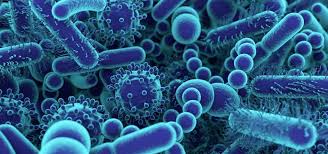Source:newatlas.com
A new tool has been developed that can effectively predict a person’s chronological age based on a microbiome sample. The tool, developed in collaboration between UC San Diego and IBM researchers, is most accurate at predicting a person’s age when using a skin microbiome sample.
A number of intriguing studies are beginning to investigate links between aging and the billions of microbes that live within and on us. Researchers from Singapore last year experimented with gut microbiome transplants between old and young mice, with the results suggesting an aging microbiome may alter its bacterial populations to balance out the more systemic deficits of aging in an organism.
This new research set out to use modern machine learning techniques to investigate whether the human microbiome could be used as an indicator of age. Three different human microbiome populations were explored in the study – skin, mouth and gut. Mining data from 10 previously published studies, the new research gathered almost 9,000 microbiome samples from subjects aged between 18 and 90 years.
Interestingly, the model found the skin microbiome to be the most accurate predictor of chronological age, correctly estimating age within a window of 3.8 years. The oral microbiome was similarly accurate, with correct estimates within 4.5 years. The gut microbiome was the least accurate, found on average to only be correct within a window of 11.5 years.
The skin microbiome is sampled using swabs from either the hand or forehead, and the research suggests both locations offer equally accurate results. The skin microbiome samples were also the most consistent across different cohorts and geographical locations, suggesting our skin microbes are quite similar no matter where we live or what we eat.
The researchers hypothesize the reason the skin microbiome is the most accurate predictor of chronological age is most likely due to general age-related physiological changes in skin conditions. As most people age their skin becomes drier and decreases serum production, and these changes can be explicitly reflected in alterations to superficial microbiome populations.
“The human microbiome is constantly evolving and has been observed to change with age,” three of the researchers write in an editorial accompanying the newly published study. “The presence of unusually early microbiome aging patterns, relative to chronological age, could potentially signal altered susceptibility for age-related diseases. Conversely, a ‘young’ microbiome might offer clues on how to decelerate the aging process.”
The current research is based on microbiome data from subjects in the United States, China, the United Kingdom, and Tanzania. More data, and larger studies, will be necessary to better home in on the microbiome differences between various geographical and ethnic populations. However, the researchers are confident the particular universality of the skin microbiome may help home in on a general relationship between microbes and aging that unifies humans across the globe.
“This new ability to correlate microbes with age will help us advance future studies of the roles microbes play in the aging process and age-related diseases, and allow us to better test potential therapeutic interventions that target microbiomes,” says Zhenjiang Zech Xu, co-senior author on the study.
